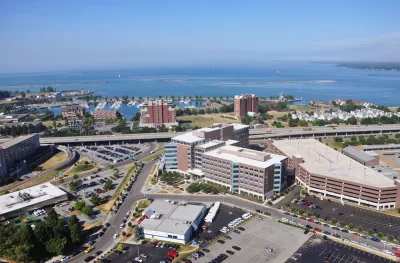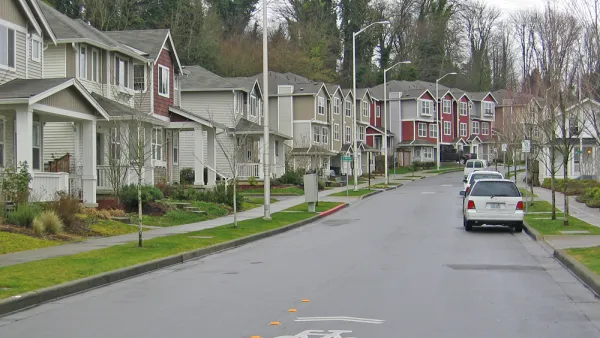Buffalo is considering policies to support affordable rental housing as demand rises. While inclusionary zoning is controversial everywhere, specific questions about the policy's effectiveness arise in cities with little to no population growth.

"While $2,000-a-month apartments with granite countertops, high ceilings and in-building gymnasiums attract millennials to downtown Buffalo, demand for government-subsidized, low-income rental housing also seems to be growing," writes Susan Schulman.
The headline focuses on what Schulman describes as "the other side of Buffalo's rental housing boom." The trend is visible after a series of large low-income have come online in the city and been immediately occupied by renters. As for why there's new demand for low-income rental housing, Schulman writes: " One reason is that Buffalo’s low-income population has inched up in recent years, census data shows. Plus rents are increasing, often beyond inflation, sometimes reflecting rising real estate values when buildings are sold," and "[t]he result is that more lower-income people in Buffalo – which has a $31,918 median household income – are being priced out of market-rate housing, increasing demand for government-subsidized."
In the face of the growing pressure, local politicians are considering inclusionary zoning. "The Buffalo Common Council seems eager to enact such a law, while Mayor Byron W. Brown appears to be seeking middle ground," reports Schulman. The article includes a thorough discussion of whether inclusionary zoning works in cities where the population is relatively flat and rents are rising at a relatively low rate. Other "Rust Belt" cities, like Detroit and Pittsburgh," are also considering inclusionary zoning, writes Schulman.
FULL STORY: The other side of Buffalo's rental boom? Not enough low-income apartments

National Parks Layoffs Will Cause Communities to Lose Billions
Thousands of essential park workers were laid off this week, just before the busy spring break season.

Retro-silient?: America’s First “Eco-burb,” The Woodlands Turns 50
A master-planned community north of Houston offers lessons on green infrastructure and resilient design, but falls short of its founder’s lofty affordability and walkability goals.

Delivering for America Plan Will Downgrade Mail Service in at Least 49.5 Percent of Zip Codes
Republican and Democrat lawmakers criticize the plan for its disproportionate negative impact on rural communities.

Test News Post 1
This is a summary

Test News Headline 46
Test for the image on the front page.

Balancing Bombs and Butterflies: How the National Guard Protects a Rare Species
The National Guard at Fort Indiantown Gap uses GIS technology and land management strategies to balance military training with conservation efforts, ensuring the survival of the rare eastern regal fritillary butterfly.
Urban Design for Planners 1: Software Tools
This six-course series explores essential urban design concepts using open source software and equips planners with the tools they need to participate fully in the urban design process.
Planning for Universal Design
Learn the tools for implementing Universal Design in planning regulations.
EMC Planning Group, Inc.
Planetizen
Planetizen
Mpact (formerly Rail~Volution)
Great Falls Development Authority, Inc.
HUDs Office of Policy Development and Research
NYU Wagner Graduate School of Public Service




























